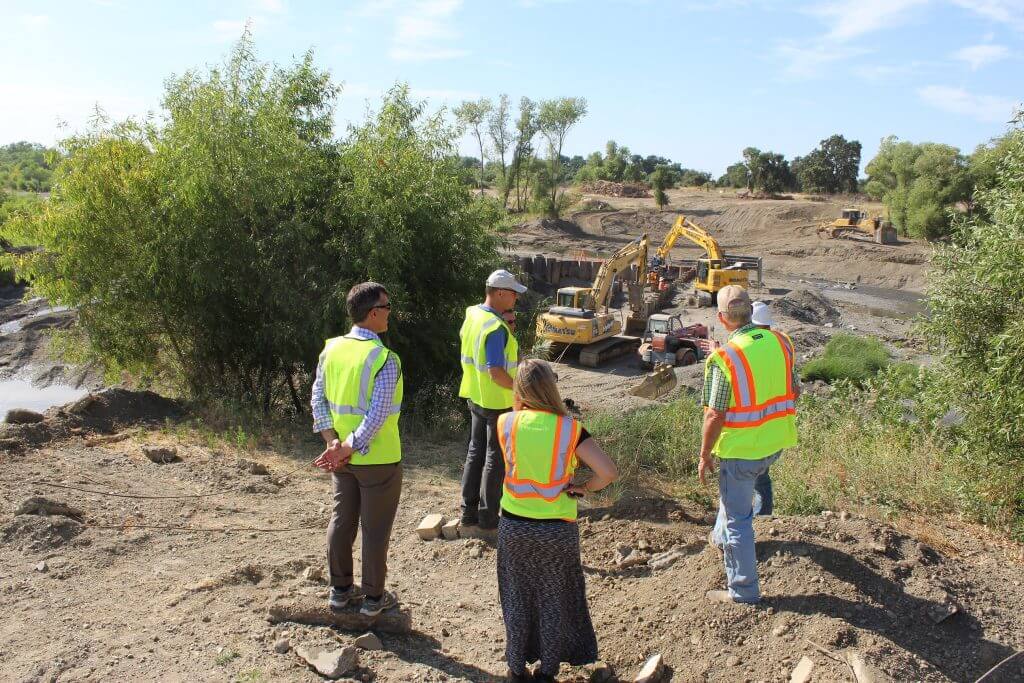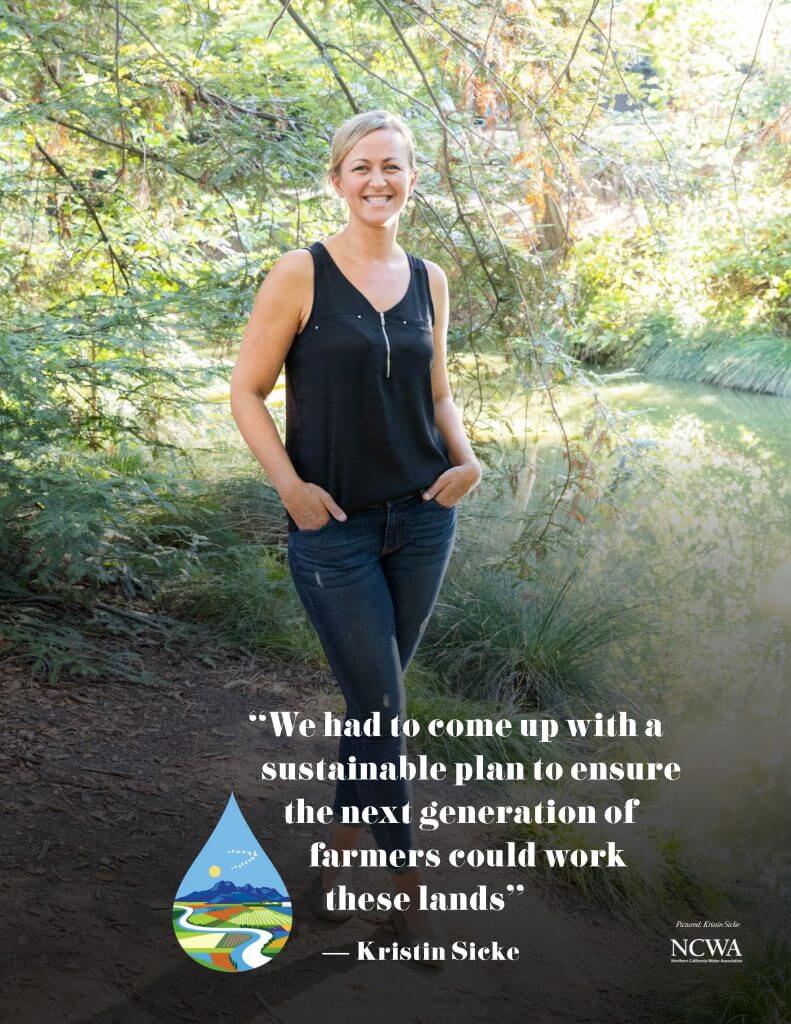If you faced the ocean from your beach chair on the warm smooth Carlsbad sand, you’d be hard pressed to miss the young, blonde-haired girl splashing in the waves.
You’d have a sense that this girl came to this spot often, and you could even surmise this girl would likely spend her life in the water.
Fast forward to today, and you’d have been correct, only maybe not the water-focused job you were envisioning.
While most kids who live near the ocean have dreams of becoming a marine biologist or professional surfer, Kristin was unsure of what she wanted to do. She was just certain that she needed to spend her time in water.

Her college decision brought her to the Sacramento Valley. Earning a master’s degree in Civil and Environmental Engineering from the University of California – Davis, Kristin was given a crash course in water resource management.
“I was very interested in evaluating alternative water supply solutions for vulnerable communities. Growing up in southern California instilled an immense appreciation of the State’s water storage and delivery system,” said Kristin Sicke, General Manager of the Yolo County Flood Control and Water Conservation District.
This curiosity landed her the job at the Department of Water Resources.
Learning the intricacies of water supply and flood management at the state level, Kristin began to aid local agencies all over California in various technical assistance and funding programs available. It is in this role she would meet Tim O’Halloran who would bring her to Yolo County.

With Tim’s retirement on the horizon, he helped her gain the confidence to deal with the complexities of managing a local irrigation district in wet and dry years. With the landowners’ water supply under constant threat, the District has had to shift the way they manage their precious resources.
Covering more than 200,000 acres and providing water for 110 customers and roughly 20 industrial contracts, managing the District requires a great deal of patience, flexibility, and ingenuity, especially when surface water availability and irrigation deliveries don’t come as they once did. Paired with junior water rights that only allow storm flow diversions from Cache Creek when there is excess water in the Delta, the District has had to think creatively and effectively optimize groundwater and surface water management.
“In 2015, we started a formal winter recharge program to ensure our drought reserve, groundwater, was available in dry years. We knew we had to come up with a sustainable plan to ensure the next generation of farmers could work these lands.”
 At the time, groundwater recharge was becoming not only an idea, but a practice. Since then, the District has been on the forefront of replenishing groundwater supplies during the rainy season. With 160 miles of unlined canals, the dirt-lined irrigation channels help funnel about 25% of the surface water back down below the surface.
At the time, groundwater recharge was becoming not only an idea, but a practice. Since then, the District has been on the forefront of replenishing groundwater supplies during the rainy season. With 160 miles of unlined canals, the dirt-lined irrigation channels help funnel about 25% of the surface water back down below the surface.
In 2016, the District successfully put back 11,000 acre-feet of water and in “excess” years has been working to maintain that level of recharge. A major benefit is the ability to monitor 26 of the 130 groundwater wells in real-time.
Since the 1970s every well has been measured once in the spring and then a second time in the fall, it gives the District a clear understanding of how much groundwater is used and available each year.
With the District facing the worst drought period in its history, Kristin believes responsible recharge and efficient surface management will get them through these tough times.
And even during boom years, she says the District will need to remain focused on continuing to recharge groundwater supplies.
Listen to podcast below.
Click below for more details.





